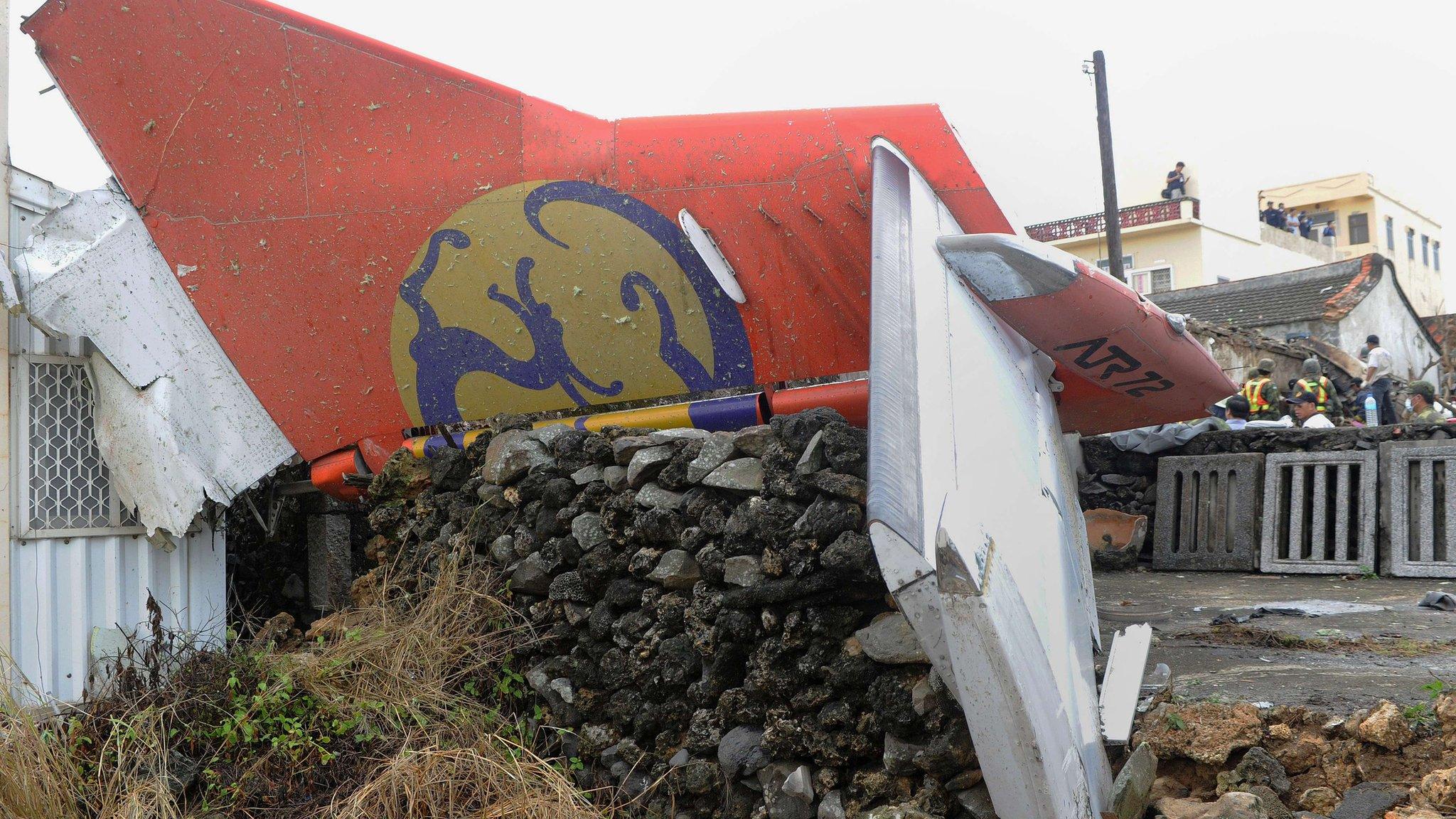Devastation and tragedy of routine Taiwan flight
- Published
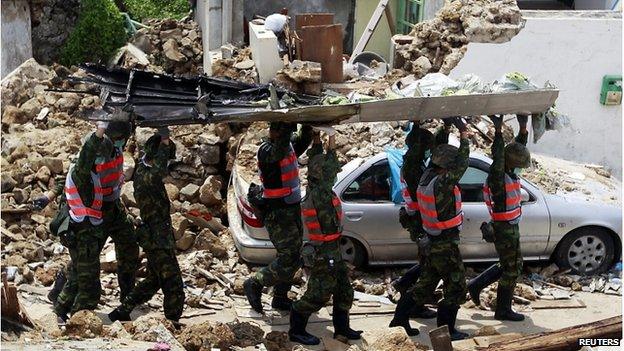
Soldiers continued to clear wreckage of the flight on Thursday
It was supposed to be a routine 35-minute journey, but flight GE222 ended tragically - taking away 48 lives suddenly.
At the scene of the crash in Magong city in north-west Taiwan, the plane could be seen split up into pieces - the cockpit jutted up against the wall of one residence, the propeller and one of the wings near another house, and the tail at the end of the narrow lane where the aircraft crashed to earth.
Mangled beyond recognition, the parts were carefully lifted onto a flatbed truck on Thursday to be taken away for analysis.
So devastating was the crash that it also destroyed some of the homes in this normally quiet neighbourhood in the Penghu archipelago.
The TransAsia Airways plane had aborted its initial landing and then lost contact with the control tower before crashing.
It took off from southern Taiwan's Kaohsiung city after a typhoon had passed through Taiwan and the authorities thought it was safe to resume flights. But they may have miscalculated.
Local residents say there was still heavy rain, as well as thunder and lightening in Penghu at the time.
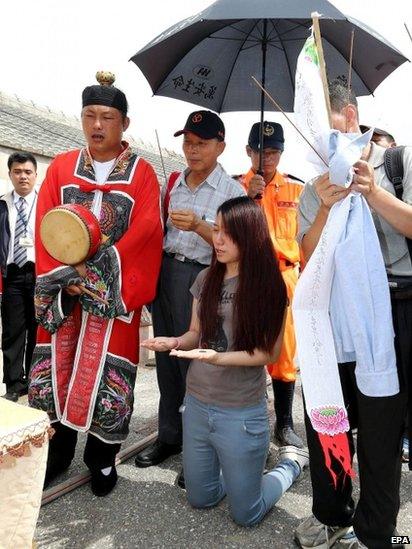
Priests led grieving relatives in prayers
"There was a loud boom. I thought it was just strong thunder. Then the ambulance came, and we realised something must have gone wrong.
"We went outside and saw a huge fire and realised the plane had crashed. It was frightening. Thank goodness it was raining at the time, which helped put out the fire," said Cheng Chia-tian, a resident in his 80s.
Another man said he and some of the residents went outside when they heard the loud sound, and found a few survivors trying to escape from the plane.
"But we couldn't do anything to help the others trapped inside because the fire was so big," he said.
The Aviation Safety Council sent a team of 11 experts to the site, skilled in forensic science, flight data recorder analysis and the impact of weather conditions on air travel.
The black boxes have been retrieved but appear damaged on the outside, so the experts will need to proceed carefully to open them and retrieve the data.
Overnight on Wednesday, having given up on finding survivors, rescue workers retrieved those who died on the TransAsia Airways flight instead.
They took bodies and body parts to a local morgue.
There are not enough refrigerators for the bodies, so a ship is bringing more to a nearby port.
A Daoist priest has been leading grieving relatives in prayers aimed at convincing the souls of the dead to leave this sad scene where their lives were unexpectedly cut short.
Some of the victims have been identified. They were mostly either local residents or people from nearby Kaohsiung city who worked in Penghu's government offices or schools.
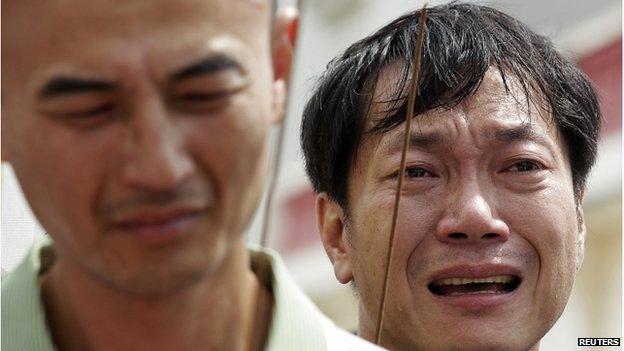
Grieving relatives of passengers have been demanding answers
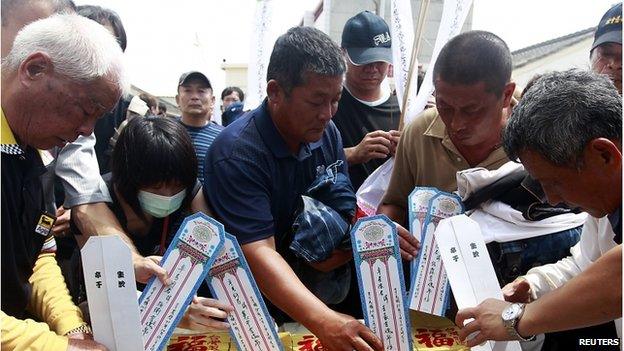
Relatives of passengers prepared religious rites to honour the dead on Thursday
In tears, relatives spoke to the dead, urging their souls to leave the site and go home.
They brought dolls - male and female - to symbolise their loved ones, while holding big portraits of them.
Once the dead are believed to have agreed to move on, a shirt belonging to them is tied to a pole, which the priest takes away from the site.
Two of the victims were French women who were on a one-month student exchange, and were likely to have been taking a sightseeing trip.
Penghu - known for its scenic natural beauty and picturesque coral stone homes - is a popular vacation spot for Taiwanese people and increasingly for foreign tourists.
Despite the crash, flights to Penghu were full on Thursday.
Of the 58 people on board the crashed plane, four were crew members, including the pilot and co-pilot and two flight attendants.
TransAsia issued a statement saying the accident was weather-related, but did not elaborate.
It said the pilot had 22 years or 22,994 hours of flight experience, and the co-pilot 2.5 years or 2,392 hours.
The ATR72-500 plane's age - 13 years - is a little older than the average age of its fleet, 10 years, but not unusually old for planes used in Taiwan.
The next step is to begin the grim process of identifying all of the victims and finding answers as to why the crash happened.
- Published24 July 2014
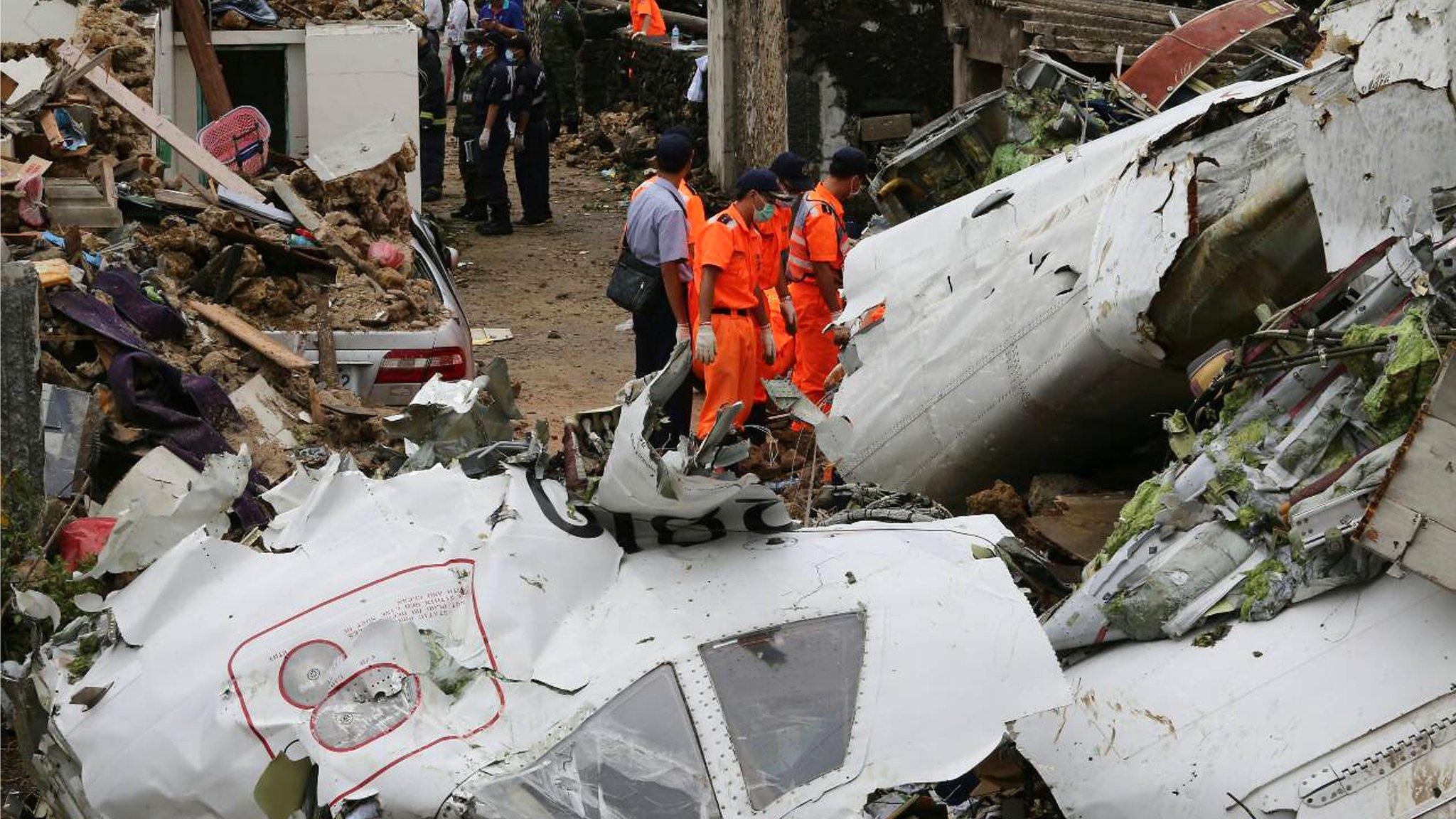
- Published23 July 2014
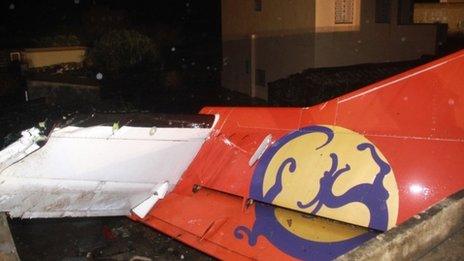
- Published24 July 2014
